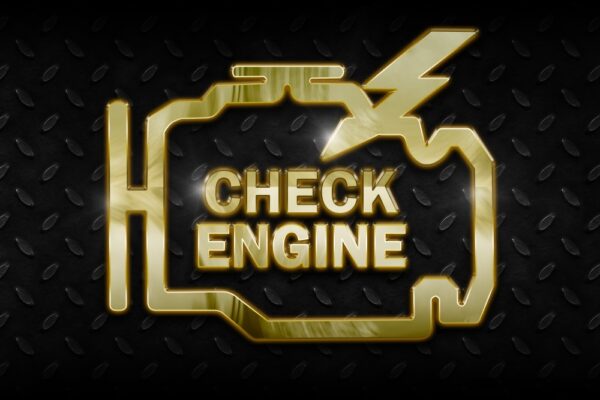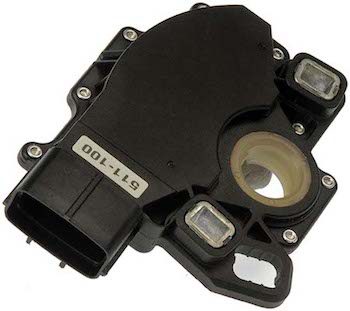
P0705 Transmission Range TRS Sensor Circuit Malfunction
Content
OBD-II Trouble Code - P0705 - Data Sheet
Transmission Range Sensor Circuit Malfunction (PRNDL Input)
What does trouble code P0705 mean?
This is a generic transmission code which means it covers all makes / models from 1996 onwards. However, specific troubleshooting steps may differ from vehicle to vehicle.
Diagnostic Trouble Code P0705 (DTC) refers to a switch, external or internal on the transmission, whose function is to signal the powertrain control module (PCM) or transmission control module (TCM) the shift position - P, R, N and D (park, reverse, neutral and drive). The reversing light can also be operated via the Transmission Range Sensor (TRS) if it is an external component.
The code tells you that the computer has detected a TRS sensor malfunction. The sensor either sends an erroneous signal to the computer or does not send a signal at all to determine the gear position. The computer receives signals from the vehicle speed sensor as well as from the TRS.
When the vehicle is moving and the computer receives conflicting signals, for example a TRS signal indicates that the vehicle is parked, but the speed sensor indicates that it is moving, a P0705 code is set.
External TRS failure is common with age and mileage accumulation. It is susceptible to weather and weather conditions and, like any printed circuit board, corrodes over time. The plus is that they do not require expensive repairs and are easy to replace with little experience in car repair.
Example of an external transmission range sensor (TRS):  Image of TRS by Dorman
Image of TRS by Dorman
Later models with a transmission range sensor located in the valve body are a different game. The range sensor is separate from the neutral safety switch and the reverse switch. Its mission is the same, but replacement has become a more serious matter both in complexity and cost. The easiest way to determine which type your vehicle has is to look up the part on your local auto parts website. If it's not listed, it's internal.
There are three types of transmission distance sensors:
- Contact type, which is a simple set of switches that tell the ECM the exact position of the transmission level. This type uses a different thread for each switch position.
- The pressure range switch is bolted to the transmission valve body. It opens and closes multiple transmission fluid passages as the shift lever is moved. As the gear position moves, another transmission fluid passage will be activated and detected by this type of flow sensor.
- The variable resistor shape is the third in a family of transmission distance sensors. Contains a series of resistors connected to the same output voltage. The resistor is designed to reduce a certain voltage. Each gear has its own resistor in its circuit and will be used based on gear placement (PRNDL).
Symptoms
In some cases, the car may fail. For the safety of the driver, TRS only allows starting in park or neutral. This feature was added to prevent the car from starting unless the owner is driving and ready to take full control of the car.
Symptoms of a P0705 trouble code may include:
- Malfunction Indicator Lamp (MIL) illuminated with DTC P0705 set
- Backup lights may not work
- It may be necessary to move the shift lever up and down slightly for better contact for the starter motor to engage and start the engine.
- It may not be possible to turn on the starter
- In some cases, the engine will only start in neutral.
- Can start in any gear
- Irregular shift revolutions
- Falling fuel economy
- The transmission may display a delayed engagement.
- Toyota vehicles, including trucks, may display erratic readings
Possible Causes of Code P0705
Reasons for this DTC may include:
- TRS is loose and not properly adjusted
- Transmission range sensor defective
- Bad connector on external TRS, loose, corroded or bent pins
- Short circuit in the wiring harness at the external sensor due to friction of the transmission lever
- Clogged internal TRS port of valve body or faulty sensor
- Open or short in TRS circuit
- Faulty ECM or TCM
- Incorrect gearshift mounting
- Dirty or contaminated transmission fluid
- Defective transmission valve body
Diagnostic steps and possible solutions
Replacing the internal TRS requires the use of Tech II for diagnostics followed by draining the gearbox and removing the sump. The sensor is located at the bottom of the valve body, which is responsible for all transmission functions. The sensor is constantly immersed in hydraulic fluid causing problems. Often the hydraulic flow is limited or the problem is due to the O-ring.
In any case, this is a complex process and is best left to a powertrain specialist.
Replacing external transmission range sensors:
- Block the wheels and apply the parking brake.
- Place the transmission in neutral.
- Find the gear shift lever. On front wheel drive vehicles, it will be located at the top of the transmission. On rear wheel drive vehicles, it will be on the driver's side.
- Pull the electrical connector out of the TRS sensor and inspect it carefully. Look in the sensor for rusty, bent, or dropped (missing) pins. Check the connector on the wire harness for the same thing, but in this case the female ends should be in place. The harness connector can be replaced separately if it cannot be salvaged by cleaning or straightening the female connectors. Apply a small amount of dielectric grease to the connector before reconnecting.
- Look at the location of the wiring harness and make sure it does not rub against the gear lever. Check for broken or shorted wires for insulation.
- Check the sensor for leaks. If not tightened, apply the parking brake and shift the transmission to neutral. Turn on the key and turn TRS until the tail light comes on. At this point, tighten the two bolts on the TRS. If the vehicle is Toyota, you must turn the TRS until the 5mm drill bit fits into the hole in the body before tightening it.
- Remove the nut holding the shift lever and remove the shift lever.
- Disconnect the electrical connector from the sensor.
- Remove the two bolts holding the sensor to the transmission. If you don't want to practice magic and turn this ten minute job into several hours, don't throw two bolts into the neutral zone.
- Remove the sensor from the transmission.
- Look at the new sensor and make sure the markings on the shaft and body where it is marked as “neutral” match.
- Install the sensor on the shift lever shaft, install and tighten the two bolts.
- Plug in electrical connector
- Install the gear shift lever and tighten the nut.
Additional Note: The external TR sensor found on some Ford vehicles can be referred to as an engine control lever position sensor or a hand lever position sensor.
The associated transmission range sensor codes are P0705, P0706, P0707, P0708, and P0709.
COMMON ERRORS WHEN DIAGNOSING CODE P0705
First, if this problem occurs, check the cleanliness of the transmission fluid. Dirty or contaminated transmission fluid is the root cause of most transmission problems.
HOW SERIOUS CODE P0705 IS?
- It's not too bad, except that you won't be able to pass an inspection with a Check Engine light.
- There may be a no start condition along with the Check Engine light.
- Uneven movements are possible.
- The car may go into sleep mode, preventing you from reaching 40 mph.
WHAT REPAIRS CAN FIX CODE P0705?
- Repair the open or short in the TRS circuit.
- Replacing a faulty TSM
- Replacing a faulty computer
- Changing the transmission fluid and filter
- Adjustment of the linkage that connects the shift lever on the transmission to the shift lever inside the vehicle.
ADDITIONAL COMMENTS TO BE AWARE OF CODE P0705
Before replacing any parts, it is recommended to check the shift lever adjustment and the condition of the transmission fluid.
Need more help with your p0705 code?
If you still need help with DTC P0705, post a question in the comments below this article.
NOTE. This information is provided for informational purposes only. It is not intended to be used as a repair recommendation and we are not responsible for any action you take on any vehicle. All information on this site is protected by copyright.


One comment
Peter
Hello. Such situation. Mazda tribute three liters. When accelerating, the car blunts, as if holding it by the opu, it barely goes uphill, it does not switch to 3rd and 4th gears. The scanner gave error p0705.